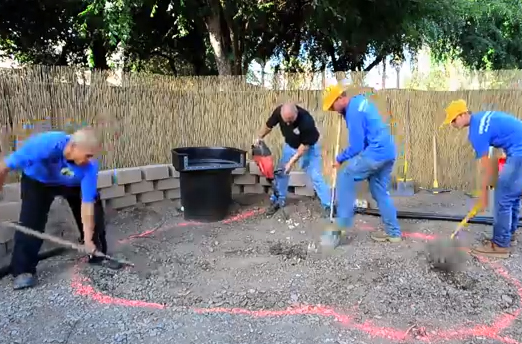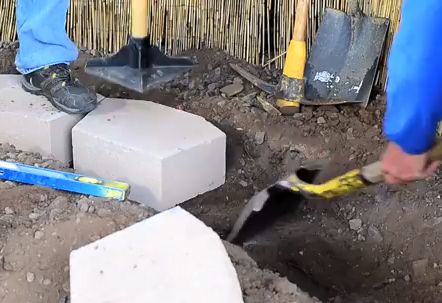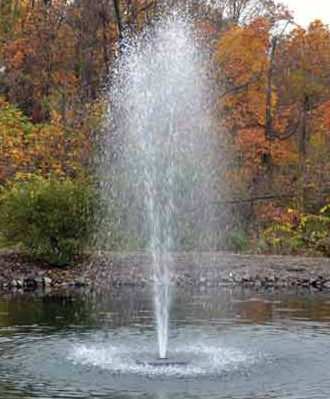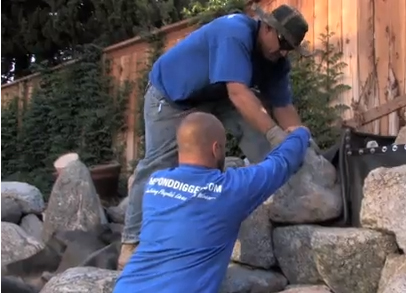pond design
All too often, do-it-yourself pond installers will jump the gun, apparently unable to resist the urge to start digging right away. My guess is that they want to get the intense labor involved in excavation out of the way, not to mention all of the grunting that comes with using a plate compactor. As the pair of videos linked below indicate, there comes a time when there’s no avoiding shovel and spadework – but it shouldn’t happen first. Instead, the installation process should begin with the
The key to good pond-filter/waterfall installation is making certain the area around the unit is well compacted, well supported and properly positioned. If you take care of all of those things, the system that drives the pond will be stable and offer trouble-free performance for many years to come. In this video, we look with special focus at one of the support systems we see as crucial to many of our successes – that is, a good retaining wall that will help keep
We at The Pond Digger Waterscape Design & Construction do a lot of our business locally, and we’ve always found value and satisfaction in giving back to the communities we serve. Back in 2002, we started Ponds for Schools, a curriculum-based program in which we work with administrators, teachers and students to set up “outdoor waterscape classrooms” for use throughout the year. This enables teachers to expand their lesson plans into the great outdoors, and we’ve heard about
I’m generally a low-key guy, but I love almost everything about building waterfalls. I like discussing a site’s potential with my clients. I like going to the supply yard and selecting stone. And while I don’t mind letting others take the lead with the digging, I do like laying out shelves and setting the pond’s interior contours in ways that will maximize
This is the third and final article in a series on auto-fill systems for ponds and watergardens. Although relative cost is certainly a key factor in the selection and installation of an auto-fill system for a pond or watergarden, there are practicalities that come into play in the decision – not the least of which will have to do with how the device is to be mounted. Float valves, for example, come in a variety of forms – some with large float bulbs attached to pivoting arms (as with common toilet valves). Not only are these devices fairly unsightly, but they also operate in a horizontal plane and need


















